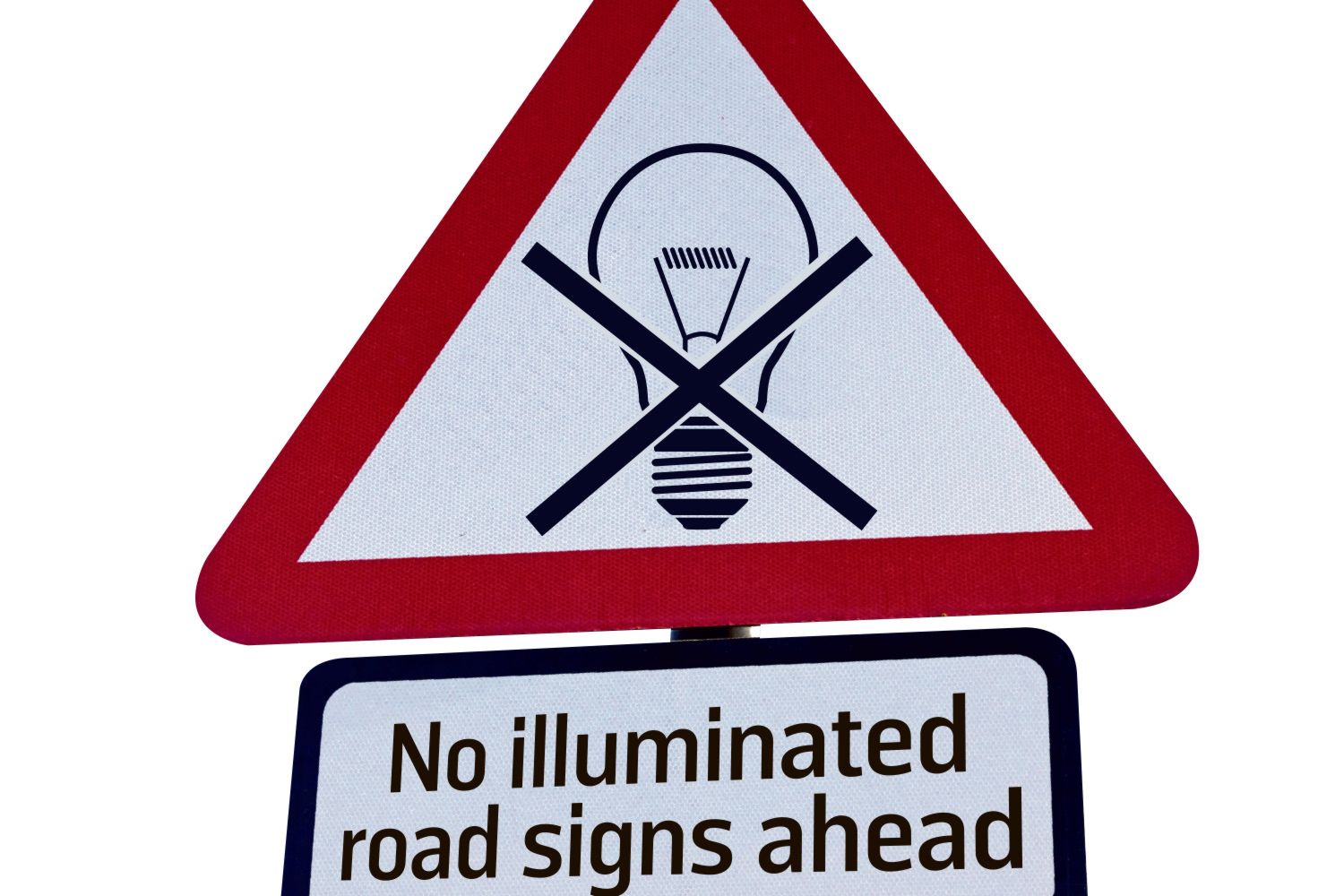Councils' street sign lighting switch-off will save cash, but at what cost?
Drivers and pedestrians at risk, say motoring groups

FIRST IT was streetlights; now it is street signs. The plug is set to be pulled on the lights over hundreds of thousands of street signs next year as councils attempt to save money.
New regulations could plunge many of Britain’s roads into darkness during the small hours since many overhead streetlights have already been switched off as part of the drive to reduce energy costs and carbon emissions.
Some motoring groups have criticised the measures, which they say will put drivers and pedestrians at risk.
Search for and buy your next car on driving.co.uk
Under current rules most warning signs in built-up areas must be illuminated. When the new regulations come into force next March, many, such as those alerting drivers to sharp bends, zebra crossings and two-way traffic, will no longer need to be. Signs deemed “safety-critical”, including those warning of no-entry roads and junctions where drivers must give way, must remain lit. The change will have the greatest effect in towns where 20mph limits apply. Here, lights will not be needed on any roadside panels, including give-way and no-entry signs.
Switching off the lights would be an easy way for councils to save money. They estimate that the electricity cost of lighting a sign is £12.94 a year. There are 580,000 illuminated road signs in England alone — if they were all turned off, £7.5m a year could be saved.
“We think advances in reflective materials mean there’s no longer the need to directly illuminate so many traffic signs when vehicle headlights can provide adequate illumination,” says Phil Barrett, director of Lancashire county council highway services. “We envisage making any decisions on a case-by-case basis and with regard to safety rather than taking a blanket approach driven by the need to save money.
“It costs around £10 a year to light a traffic sign and any savings could help to maintain other services which are under pressure.”
Bristol city council says it will not install lights where they are no longer required. Edinburgh city council says it is considering how the changes could be implemented in its plans for a city-centre 20mph zone. London Councils, which represents authorities in the capital, expects members to install fewer lit signs in new 20mph zones and to gradually switch off existing lamps.
“It costs around £10 a year to light a traffic sign and any savings could help to maintain other services which are under pressure.”
Many of Britain’s roads are already darker than they were a few years ago. In 2006 Essex county council began a pilot scheme in which it switched off streetlights between midnight and 5am to save energy. Other councils followed, and three years later the concept gained the backing of the Royal Commission on Environmental Pollution.
Two-thirds of councils have now switched off streetlights. The trade union Unison estimates that this equates to more than 1m lamps. AA research has found that accidents at night or in the wet, snow or ice on lit roads with a 40mph speed limit fell by 21.8% between 2007 and 2012. On roads without lighting, the reduction was just 5.2%.
“Highways authorities are determined to put drivers and pedestrians in the dark,” says Edmund King, president of the AA. “It really is one step too far. When streetlights are switched off, pedestrians can’t see where the pavement ends.
“All drivers have now is the light from road signs. If those are switched off, it will be easy for drivers to miss the signs, especially if there is foliage in front of them, which often happens. If they are turning into a no-entry road, their headlights won’t illuminate the sign.”
Highway authorities are determined to put drivers and pedestrians in the dark. It really is one step too far
Taxpayers are getting used to cuts made in the name of the environment, which also have the effect of saving local authorities money. As well as switching off streetlights, councils have been reducing the frequency of rubbish collections in recent years, telling residents such measures are designed to encourage them to recycle more.
The plans to extinguish lit road signs are contained in a document called Traffic Signs Regulations and General Directions 2015: Consultation Response, published this month. The proposals will come into effect once they have been signed off by the transport secretary.
In the document, the Department for Transport acknowledges that some councils and motoring groups have reservations. It notes that during the consultation there was “concern . . . that with the increase in authorities switching off street lighting overnight, it may be going too far to reduce lighting requirements as many signs may not be illuminated by car headlights on dipped beam and that even at low speeds it is easy to miss signs.”
However, the department has concluded that improvements in reflective coatings on road signs and brighter headlights negated any risk to drivers and pedestrians — and councils will still have the option of leaving lights on.
“Most traffic signs do not require lighting but from 2015 local authorities will have greater say on which traffic signs are illuminated,” says the Department for Transport. “The most safety-critical traffic signs will still need to be lit in street-lit areas where the speed limit is 30mph or more.”
Not everyone is convinced. “It is sensible to reduce lighting costs,” says David Davies, executive director of the Parliamentary Advisory Council for Transport Safety. “But for safety-critical signs, this does not sound satisfactory or safe.”
Search for and buy your next car on driving.co.uk




